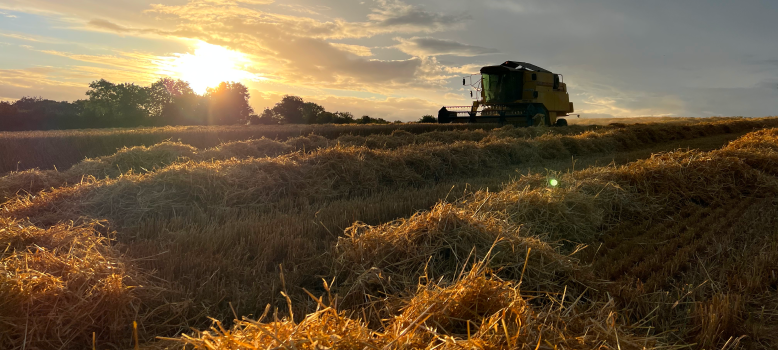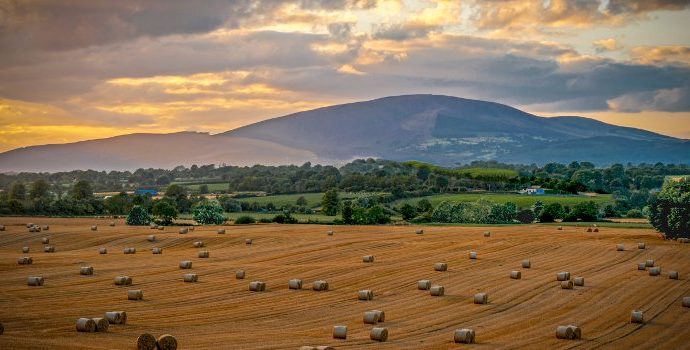IFA Assessment of Impact on Tillage Farmer Incomes in 2023

2023 has proved to be a problematic year on all tillage farms with the weather proving especially difficult in March, April, July and September. This has been further exacerbated by very high inputs costs for fertiliser and fuel at the beginning of 2023 and a significant fall (-€100/t) in grain prices throughout 2023. Additionally, many tillage growers will face a significant drop in direct payments for 2023 due to convergence of entitlement values.
As a result, in July, Teagasc estimated tillage farm incomes for 2023 were expected to reduce to €37,000 – a 54% reduction on 2022 levels and a 25% reduction on the 5-year average tillage farmer income (2018-2022). When aggregated, the overall drop in Irish tillage farmers incomes equates to over €260m in 2023 compared with 2022.
The proposed emergency financial support announced by the Department of Agriculture, Food and the Marine equated to €1,148 per tillage farmer based on average tillage farm size of 41ha (Teagasc NFS 2022) meaning that this payment only accounts for a fraction (3%) of the estimated €42,876 income drop for Irish tillage farmers in 2023 compared with 2022.
The situation is at crisis point on farms which have cereal crops still be harvested by mid-October. The financial implications for growers who have unharvested crops are extremely serious. The cost of production excluding land charge for spring barley and spring oats in 2023 was €1589 and €1568 per hectare respectively (Teagasc Costs and Returns, 2023). IFA analysis estimates the losses on an unharvested spring barley crop including a land charge exceed €2200 per hectare.Spring barley has proved to be disproportionally affected, principally due to late sowing dates in April and May. Teagasc have estimated that at least 45% of the national spring barley was planted after mid-April. The knock-on effect of this is delayed maturity and many crops were still unripe during the warm weather in early September. Rainfall in the remaining three weeks of September was significantly above average in the east and south of the country. Figures from Met Eireann synoptic network show all stations in these regions reported in excess of 170% expected monthly rainfall for September. This made harvesting almost impossible and only further reduced yield and quality. October has seen further heavy rainfall in the south of the country and ground conditions have severely deteriorated in many fields. An assessment of the area of unharvested cereal crops has been completed by IFA grain representatives nationally, this is outlined overleaf in Table 1.
Table 1: Unharvested tillage crop areas per county as reported to IFA representatives by 07.11.23

Table 2: Financial Losses on Unharvested Spring Cereal Crops
| Cost Incurred per ha | Land charge per ha | Total Cost/Ha | Estimated Area Nationally (ha)[Reported ha + 25%]* | Associated Losses Nationally | |
| Spring Barley | €1589 | €700 | €2289 | 1634 | €3,740,226 |
| Spring Oats | €1568 | €700 | €2268 | 281 | €637,308 |
| Total | 1915 | €4,377,534 |
Table 3: Financial Losses on Salvaged Spring Barley Crop
| Cost Incurred per ha | Land charge per ha | Total Cost/Ha | Cost Recovery/Ha* | Loss/Ha | Estimated Area Nationally (ha)[Reported ha + 25%]** | Associated Losses | |
| Spring Barley | €1589 | €700 | €2289 | €527 | €1762 | 2,500 | €3,524,000 |
** While every effort has been made to identify salvaged crops, it is not an exhaustive survey – accordingly an additional 25% provision has been included to account for same.
Table 4: Combined Financial Losses arising from weather impact
| Category | Financial Loss (€) |
| Unharvested crops | 4,377,534 |
| Salvaged crops | 3,524,000 |
| Unbaled straw losses* | 337,813 |
| Total | €8,239,347 |
Points of Note
- Total losses arising from crop losses due to weather conditions are estimated to be circa €9m.
- This is in addition to the estimated drop in overall tillage farmer income of over €260m compared with 2022
- An exceptional aid package is needed for farmers who have unharvested crops remaining in fields as well as farmers who salvaged crops but still incurred substantial losses from October 1st onwards.
- An aid payment of €1000/ha is necessary to mitigate financial losses for an unharvested crop and €500/ha for crops salvaged after October 1st.
- In addition, the IFA is also proposing the following:
- Farmers with unbaled straw still remaining on the ground in 2023 should qualify for a straw incorporation payment of €250/ha.
- All applicants for the 2024 Straw Incorporation Measure should be accepted into the scheme.
- An SCBI backed low-cost loan scheme to help affected tillage farmers financially recover from losses sustained in 2023. Tillage is environmentally sustainable and loss-making growers must be supported to remain active in the sector.



